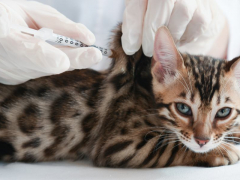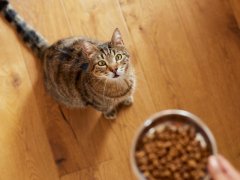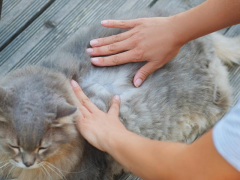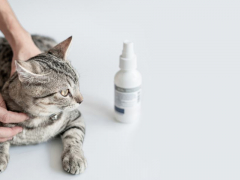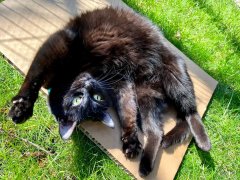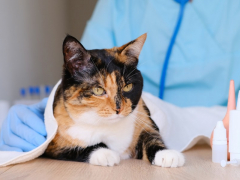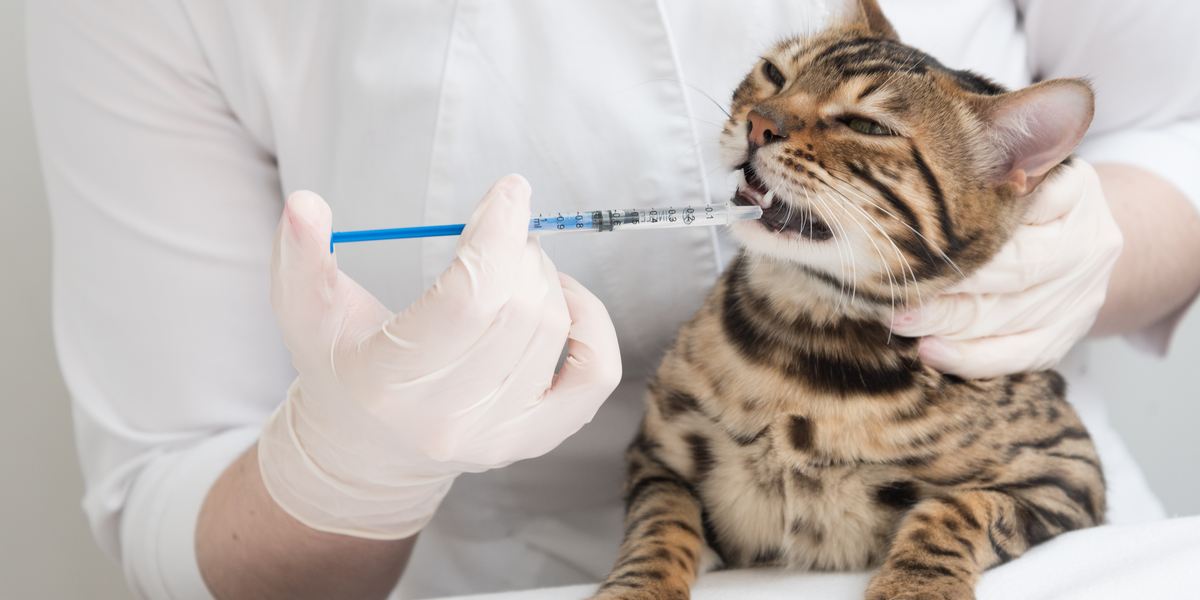
Pradofloxacin for cats, which goes by the brand name Veraflox, and is manufactured by Bayer Animal Health, is an antibiotic often used in veterinary medicine that is FDA-approved for use in cats for certain types of bacterial infections. In this article, you’ll learn what pradofloxacin is, how it works, some of its applications, possible side effects, and some frequently asked questions.
Pradofloxacin for Cats Overview

About Pradofloxacin for Cats
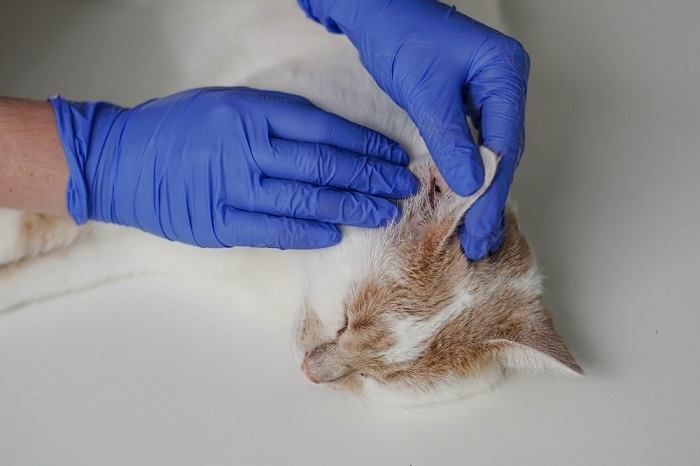
Pradofloxacin is an antibiotic in the fluoroquinolone class, which also includes the antibiotic marbofloxacin (Zeniquin) and enrofloxacin (Baytril). While other fluoroquinolones are in tablet form, pradofloxacin is the first oral liquid formulation approved for use in cats.
Pradofloxacin may be used for a variety of infections in cats, ranging from the skin to the respiratory tract to the urinary tract.
Pradofloxacin has enhanced activity against oxygen-dependent (aerobic) gram-positive staining bacteria, as well as bacteria that are not oxygen dependent (anaerobes). It also has activity against gram-negative staining bacteria.
Pradofloxacin is a bactericidal antibiotic that is concentration dependent. Bactericidal means that pradofloxacin actively kills bacteria versus stopping their growth like bacteriostatic antibiotics.
Being a concentration-dependent antibiotic means that its activity and effectiveness are dependent on its concentration at the needed location of infection.
Pradofloxacin works to kill bacteria through two mechanisms that prevent them from synthesizing their own DNA.
What Does Pradofloxacin Do for Cats?
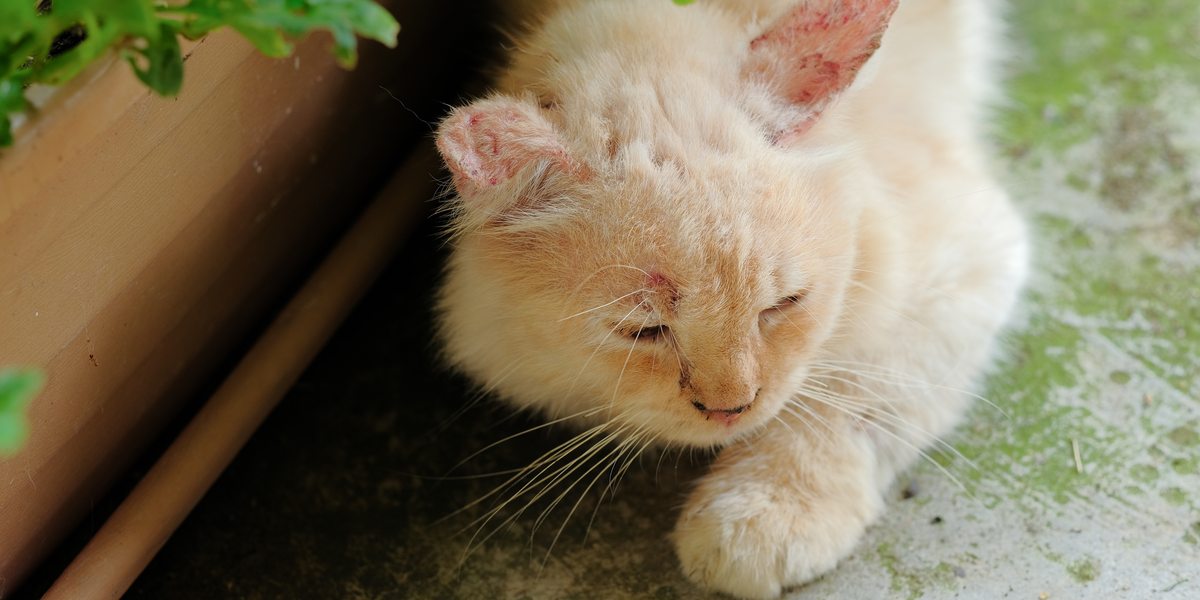
Pradofloxacin is an FDA-approved antibacterial for use in treating skin infections in cats, especially wounds and abscesses, caused by some specific bacterial strains. These include strains of Pasteurella, Streptococcus, and Staphylococcus.
However, use of fluoroquinolones may also be in an extra-label manner for infections in other locations of the body, especially the respiratory tract and urinary tract. Bartonellosis and Mycoplasma haemofelis, both organisms that can cause infections in the blood of cats, may also be susceptible to pradofloxacin.
Also Read: Cat Upper Respiratory Infection
Like any antibiotic, pradofloxacin should only be used based on the presence of susceptible bacteria or a high suspicion of a susceptible infection. Antibiotic use is most successful based on bacterial culture and antibiotic sensitivity profile.
Bacterial culture samples are most commonly collected in the cases of skin and urinary tract infections because of their relative ease of sample collection. However, a veterinarian may decide to use an antibiotic like pradofloxacin empirically based on the knowledge of the types of bacteria typically present in a location and what antibiotics they’re typically sensitive to.
Side Effects of Pradofloxacin for Cats
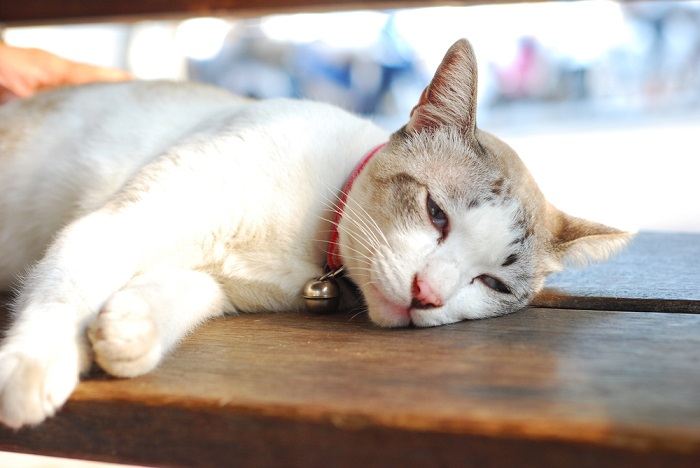
Pradofloxacin is the first oral liquid formulation of a fluoroquinolone class antibiotic approved for use in cats.
Pradofloxacin is generally well-tolerated by a majority of cats. According to the manufacturer, in a study of more than 200 cats, the most common side effect seen in about 3% of cats included diarrhea/loose stools.
Other side effects have included gastrointestinal clinical signs like vomiting, decreased appetite, lethargy, and hypersalivation (excessive drooling).
In young, growing animals, fluoroquinolones have been associated with articular cartilage abnormalities. While still approved for cats older than 12 weeks of age, any fluoroquinolone should be used cautiously in developing animals.
Pradofloxacin is approved for use for up to seven days in cats. The main cause for this indicated time period is that when used for longer than seven days, a reversible alteration in certain white blood cells occurred in some cats, where the counts of these cells decreased.
Because safety has not been fully evaluated, pradofloxacin is not approved for use in cats less than 12 weeks of age, pets that are pregnant or lactating, or cats who are immunocompromised, especially from feline leukemia virus (FeLV) or feline immunodeficiency virus (FIV).
Pradofloxacin should be used cautiously in cats with kidney insufficiency, as a majority of the drug is excreted through the urine. It should also be used with caution in cats with pre-existing neurologic disorders, and heart disease contributing to arrhythmias.
Fluoroquinolones can lead to photosensitivity, meaning that the drug can increase the risk for sunburn. Be cautious if your kitty is on this medication and enjoys sunbathing a lot. Sensitive areas, especially the nose and areas with less hair like near the base of the ears, may be more susceptible.
While enrofloxacin (Baytril) has been associated with a form of blindness where the retina at the back of the eye is affected, this has not been demonstrated in cats with pradofloxacin. An ocular safety study involving 20 cats given high doses of pradofloxacin for 23 days demonstrated no significant retinal changes during that time.
All cats in an oral pilot study that received pradofloxacin at a higher-than-labeled dose for 25 days experienced vomiting and hypersalivation (excessive drooling), suggesting this may be the most common thing to watch for with longer periods of use, higher doses, or overdoses.
Pradofloxacin can have some interactions with other medications. Chief among these in cats may include steroids like prednisolone and cyclosporine (Atopica). Because of the increased risk of kidney toxicity, use of pradofloxacin and cyclosporine together is not recommended. Always make sure to discuss medications your kitty is on with your veterinarian when considering pradofloxacin use.
If you are ever concerned that your kitty may have developed side effects while using pradofloxacin, or if an overdose is suspected, make sure to contact your veterinarian, the ASPCA Animal Poison Control Center (1-888-426-4435), or Pet Poison Helpline (1-855-764-7661) immediately for further advice.
Pradofloxacin for Cats Dosage
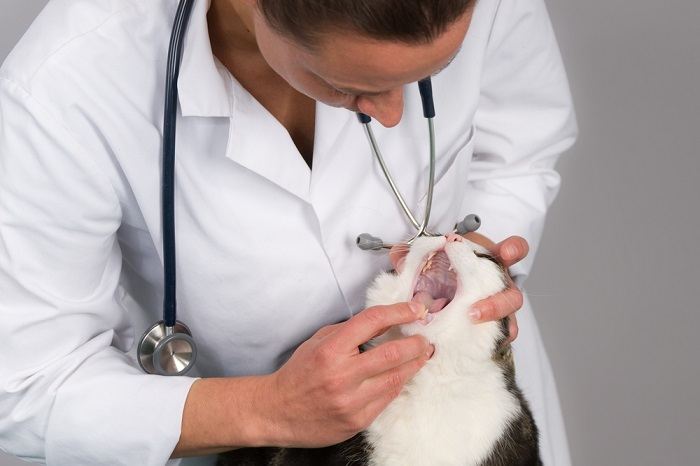
Pradofloxacin can interact with other drugs and should not be used in cats with certain medical conditions.
Pradofloxacin is only labeled for oral administration use in cats and kittens over the age of 12 weeks.
The labeled, FDA-approved dose for pradofloxacin (Veraflox) according to the manufacturer, is 7.5 milligrams/kilogram (3.4 milligrams/pound) of body weight given orally once daily for seven consecutive days.
Veraflox is only available for cats as a 25 milligram/milliliter oral suspension liquid in the United States. A 15 milligram tablet form is approved for use in the the United Kingdom and Europe. If a fluoroquinolone is needed and tablets are preferred, veterinarians will often utilize marbofloxacin, which has a similar efficacy and safety profile.
There may be some situations where a veterinarian may wish to use a fluoroquinolone for longer than seven days. While considered off-label use, this is not uncommon and it is important to follow your veterinarian’s directions when using any antibiotic. In some of these indications for longer use, a recheck blood work panel may be recommended.
Even if your kitty appears to be doing or feeling better, always finish out a prescribed antibiotic dosage course, unless concerning adverse effects are seen. Stopping an antibiotic too early may increase the risk that bacteria may rebound and develop resistance to that antibiotic, making it ineffective.
Pradofloxacin is best dosed on an empty stomach, as administration with food may reduce its absorption. However, if your kitty shows signs of digestive upset shortly after dosing, giving with a small amount of food may help. Use of certain antacids should be avoided as they may reduce pradofloxacin’s absorption.
Conclusion
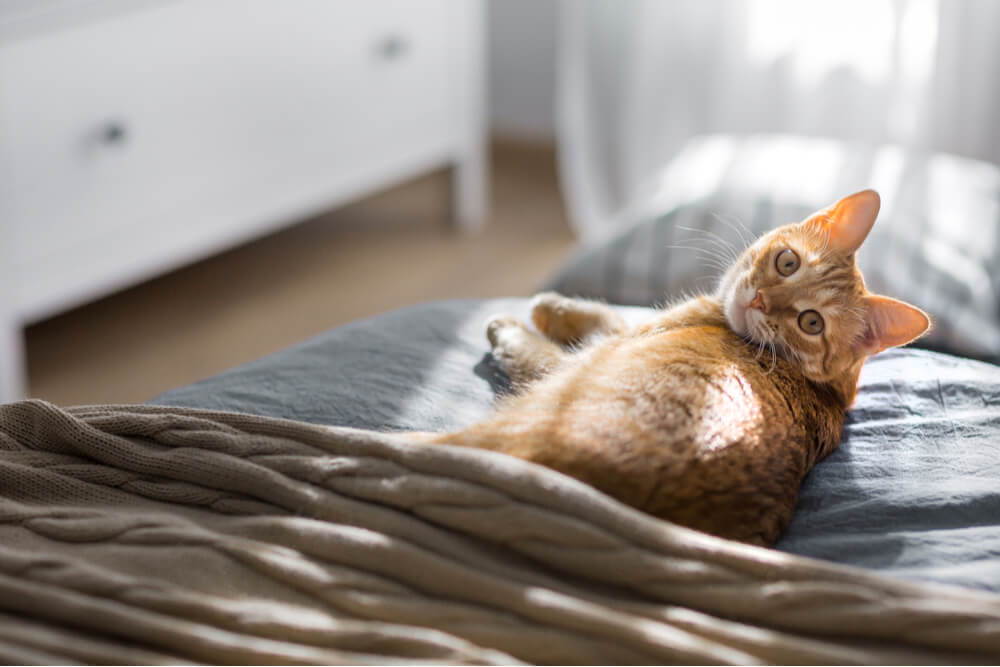
Pradofloxacin is a very useful fluoroquinolone antibiotic for use in cats, especially in cases where a liquid formulation is preferred. A liquid formulation also allows for more accurate dosing compared to tablets.
Most side effects and toxicities are limited to vomiting, drooling, and loose stool. Pradofloxacin is not an antibiotic indicated for all types of infections, and its indication for use should be restricted to a veterinarian’s discretion.
Drug Dosing Disclaimer: We are only able to provide doses for medications that are FDA approved for use in cats and only as the label guidelines dictate. For medications that are used off-label we can only provide guidelines and safety information for use. Safe and appropriate dosing for off-label medications can only be determined by a primary care veterinarian.
We encourage you to work with your veterinarian to determine if a particular medication is appropriate for your cat. Changing or adjusting a dose for your cat on your own without consulting with a veterinarian can carry risk. We do not encourage use of medications prescribed for human use in pets without first consulting with a primary care veterinarian.
